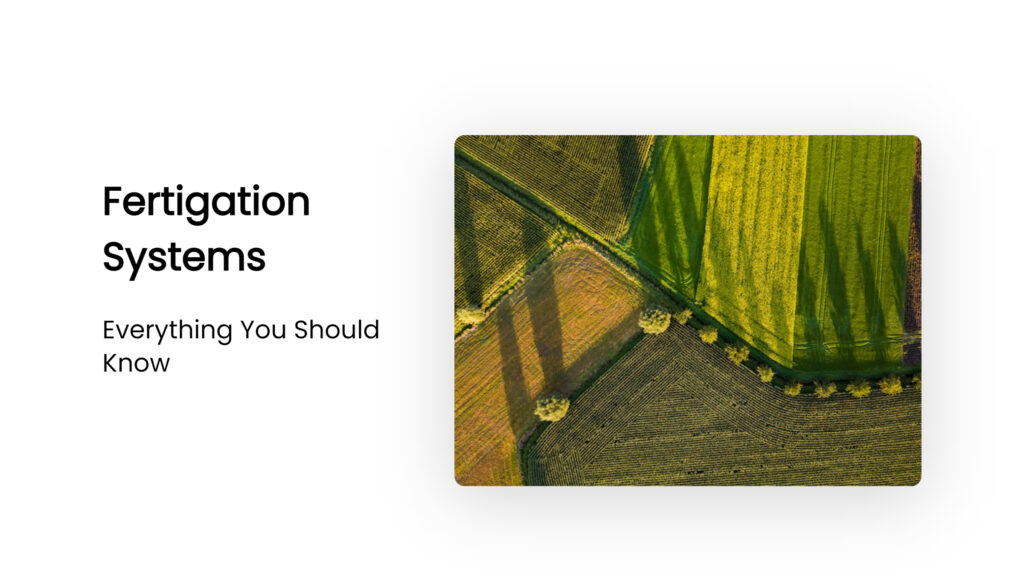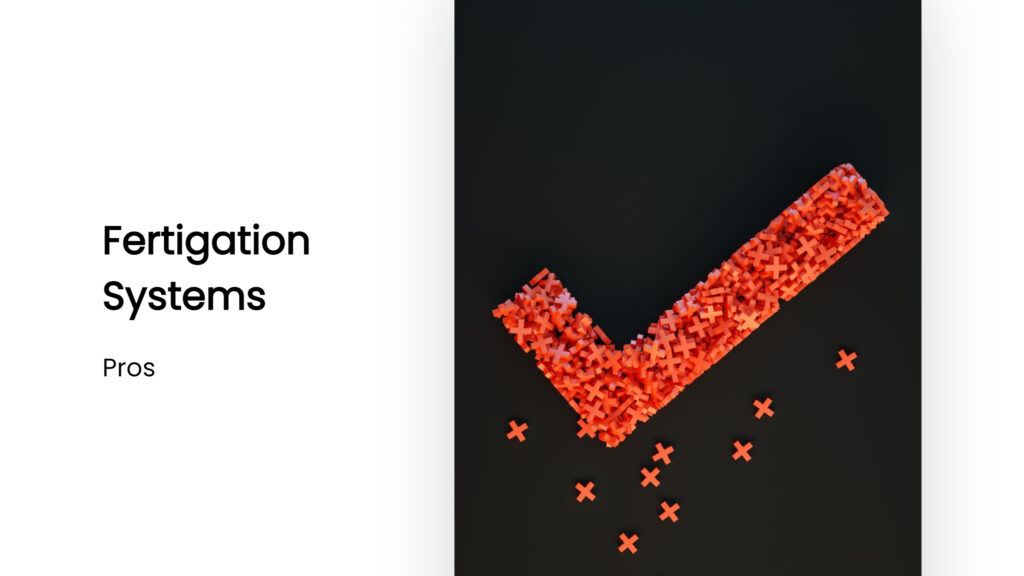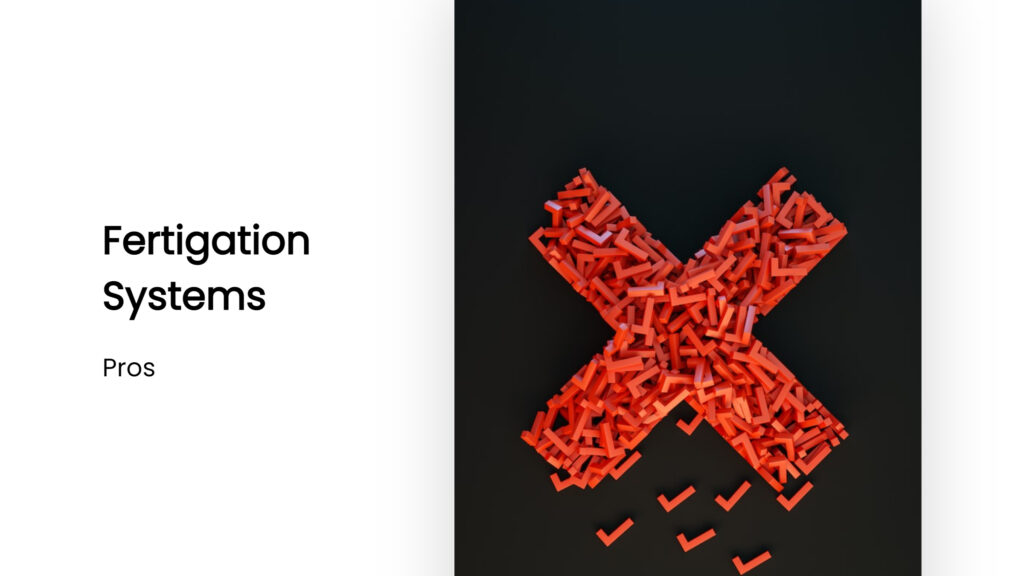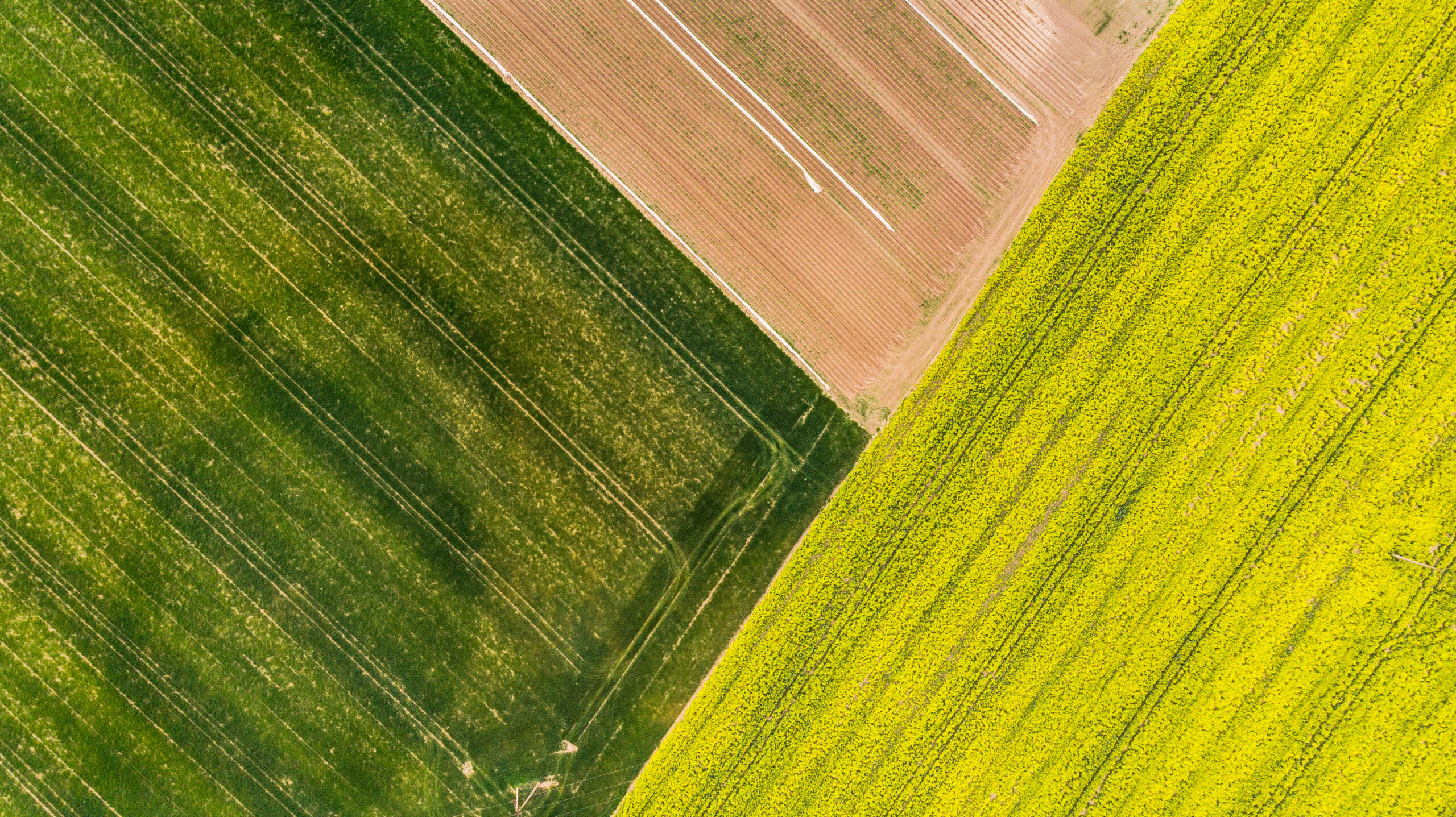Irrigation has been around for centuries, but how we irrigate our crops constantly evolves.
One of the most recent innovations in irrigation is fertigation, which involves adding fertilisers to water and then applying them to crops.
Fertigation systems offer several benefits for farmers and agricultural workers, becoming increasingly prevalent worldwide.
In this blog post, we will discuss fertigation systems in more detail and outline everything you should know about them in 2022. Stay tuned!

But first,
What is Fertigation?
Fertigation is the process of applying fertiliser through an irrigation system. It allows for greater efficiency and control compared to traditional fertiliser application methods.
With fertigation, the right amount of fertiliser can be applied directly to the root zone of plants, resulting in healthier growth and improved yields.
In addition, fertigation can help to reduce the chance of nutrient runoff, which can cause environmental damage.
As more farmers and gardeners adopt this practice, fertigation will likely become even more popular in the years to come.
What is a Fertigation System?
A fertigation system is an irrigation system that delivers fertiliser directly to the roots of plants through a network of tubes and emitters.
Fertigation systems can be used to deliver a variety of different nutrients, including nitrogen, phosphorus, potassium and basically any liquid or water-soluble product.
Many fertigation systems also include controllers that allow growers to automate the delivery of nutrients based on the specific needs of their plants.
The benefits of fertigation systems include improved nutrient uptake, increased yields, and reduced labour costs.
In addition, fertigation systems can help reduce the environmental impact of fertiliser by limiting the number of nutrients lost to leaching.
Pros and Cons

Pros of having a fertigation system:
Allows for more efficient and controlled fertiliser application
There are several benefits to using a fertigation system, including more efficient and controlled fertiliser application.
With fertigation, fertiliser is applied directly to the root zone of plants, where it can be more easily absorbed.
It helps to reduce wastage and ensures that nutrients are used in the most effective manner possible. It is inherently supporting plant health.
Can help to reduce nutrient runoff
Fertigation is the process of applying fertiliser through an irrigation system.
Instead of spreading fertiliser on the ground and hoping plants will take it up, fertigation delivers nutrients directly to the roots.
It can have several benefits, particularly regarding reducing nutrient runoff.
When fertiliser is applied to the ground, there is a risk that heavy rains could wash it away before it has a chance to be taken up by plants.
It can lead to pollution of waterways and loss of valuable nutrients. With fertigation, however, nutrients are delivered directly to the roots, minimising the risk of runoff.
Improves nutrient uptake by plants
The fertigation system can offer several advantages, particularly for large-scale agricultural operations.
One of the main benefits of fertigation is that it improves plant nutrient uptake. When nutrients are applied directly to the roots, they are immediately available for absorption.
It can lead to healthier plants and higher yields. Additionally, fertigation can help to reduce losses from leaching and evaporation.
Applying nutrients directly to the roots, less fertiliser is lost to the surrounding environment.
As a result, fertigation can be more efficient and environmentally friendly in delivering nutrients to plants.
Reduces labour costs
It can help to reduce labour costs. Fertigation systems can be set to deliver nutrients on a schedule, which means that they can operate without constant supervision.
It can free workers and allow them to perform other tasks, such as mowing or trimming hedges.
Helps to limit the environmental impact of fertiliser
By directly applying fertiliser to the root zone of plants, fertigation can help reduce the amount of fertiliser lost to runoff.
In addition, fertigation can help minimise the amount of time and labour required to apply fertiliser.
As a result, fertigation can be an efficient and environmentally friendly way to fertilise your plants.
Cons of having a fertigation system:

Requires an initial investment
Installing a fertigation system can require a small initial investment, as you must purchase the necessary equipment and (usually) hire a professional to install it.
Can be complex to operate
Fertigation systems can be complex to operate, and you will need to understand how they work to use them effectively. EZ-FLO systems are incredibly simple to use and install.
If you are not familiar with the operation of fertigation systems, it is advisable to hire a professional to help you set it up.
Must be maintained appropriately
Maintaining a fertigation system can be expensive, as you must regularly purchase fertiliser and water. In addition, if something goes wrong with the design, you may need to hire a professional to fix it.
Overall, fertigation can be a great way to deliver nutrients to your plants.
However, weighing the pros and cons before deciding if it is right for you is essential.
Suppose you are unsure whether or not fertigation is right for you. In that case, it is advisable to speak to a professional before deciding.
Types of fertilisers that can be used in fertigation:
Inorganic fertilisers
Inorganic fertilisers, such as ammonium nitrate and calcium carbonate, are typically used in fertigation.
Ammonium nitrate
Ammonium nitrate is the most popular fertiliser used in fertigation due to its high nitrogen content. It is typically applied to crops in the spring to encourage growth and yield.
Ammonium nitrate is also effective in preventing leaf burn and can be used to correct deficiencies in nitrogen levels.
However, it is worth noting that ammonium nitrate is a highly combustible material and should be stored and used with caution.
Calcium carbonate
Calcium carbonate is a type of limestone that is commonly used as a fertiliser. It is relatively inexpensive and easy to find, making it a popular choice for farmers.
Calcium carbonate can help to improve the quality of soil, as well as provide essential nutrients for plants. In addition, it can also help to improve drainage and reduce compaction.
As a result, Calcium carbonate is an essential tool for ensuring healthy plant growth.
Organic fertilisers
Organic fertilisers, such as compost and manure, can also be used in fertigation. However, they must be appropriately decomposed before they can be applied to the roots of plants.
Synthetic fertilisers
Synthetic fertilisers, such as urea and ammonium sulphate, can also be used in fertigation.
However, they can be more expensive than organic or inorganic fertilisers.
Does Fertigation Damage Irrigations Systems:
Applying fertiliser through an irrigation system is a process known as fertigation.
Although fertigation can save time and labour, it can damage irrigation systems if not done correctly.
Fertilisers contain salts that can clog nozzles and build up on pipes, eventually leading to system failure. In addition, fertilisers can change the pH of the water, making it more acidic and corrosive.
To avoid damage to your irrigation system, be sure to use a trustworthy fertiliser and test the pH of the water before applying it.
In addition, be sure to flush the system regularly to remove any buildup of salt or sediment.
With some care, you can keep your irrigation system in top condition while still getting the benefits of fertigation.
Frequently Asked Questions
How often should I fertilise my plants?
The frequency with which you fertilise your plants will depend on the type of fertiliser you are using and the growth stage of your plants.
In general, it is recommended that you fertilise your plants every two to four weeks.
However, it is essential to read the instructions on your fertiliser carefully, as some types of fertiliser may need to be applied more or less often.
What are the signs that my plants need fertiliser?
Several signs indicate that your plants need fertiliser, including yellowing leaves, stunted growth, and poor fruit or flower production.
If you notice any of these signs, it is crucial to fertilise your plants as soon as possible.
Can I make my fertiliser?
You can make your own fertiliser, provided its in liquid or water-soluble form.
You could try composting organic materials, such as leaves and grass clippings.
However, it is essential to note that homemade fertiliser may not be as effective as commercial fertiliser.
What are the risks of using fertiliser?
If fertiliser is not used correctly, it can cause environmental damage and harm plants, animals, and humans.
For example, nitrogen-based fertilisers can pollute waterways and contribute to global warming. Additionally, chemical fertilisers can burn plants if applied in too high a concentration.
It is essential to be aware of the risks associated with fertiliser before using it and to follow the instructions on the label carefully.
When appropriately used, fertigation can be an effective way to fertilise your plants.
However, choosing the right type of fertiliser for your plants is essential and following the instructions carefully.
Suppose you are unsure whether or not fertigation is right for you. In that case, it is advisable to speak to a professional before deciding.
The Bottom Line
Fertigation systems are a great way to improve your garden or farm production. They provide plants with the nutrients they need while also watering them.
If you are interested in installing a fertigation system, research and find one that fits your needs. We hope this article has been helpful and informative.
- What is Fertigation?
- What is a Fertigation System?
- Pros and Cons
- Pros of having a fertigation system:
- Allows for more efficient and controlled fertiliser application
- Can help to reduce nutrient runoff
- Improves nutrient uptake by plants
- Reduces labour costs
- Helps to limit the environmental impact of fertiliser
- Cons of having a fertigation system:
- Types of fertilisers that can be used in fertigation:
- Inorganic fertilisers
- Inorganic fertilisers, such as ammonium nitrate and calcium carbonate, are typically used in fertigation.
- Organic fertilisers
- Synthetic fertilisers
- Does Fertigation Damage Irrigations Systems:
- Frequently Asked Questions
- The Bottom Line
